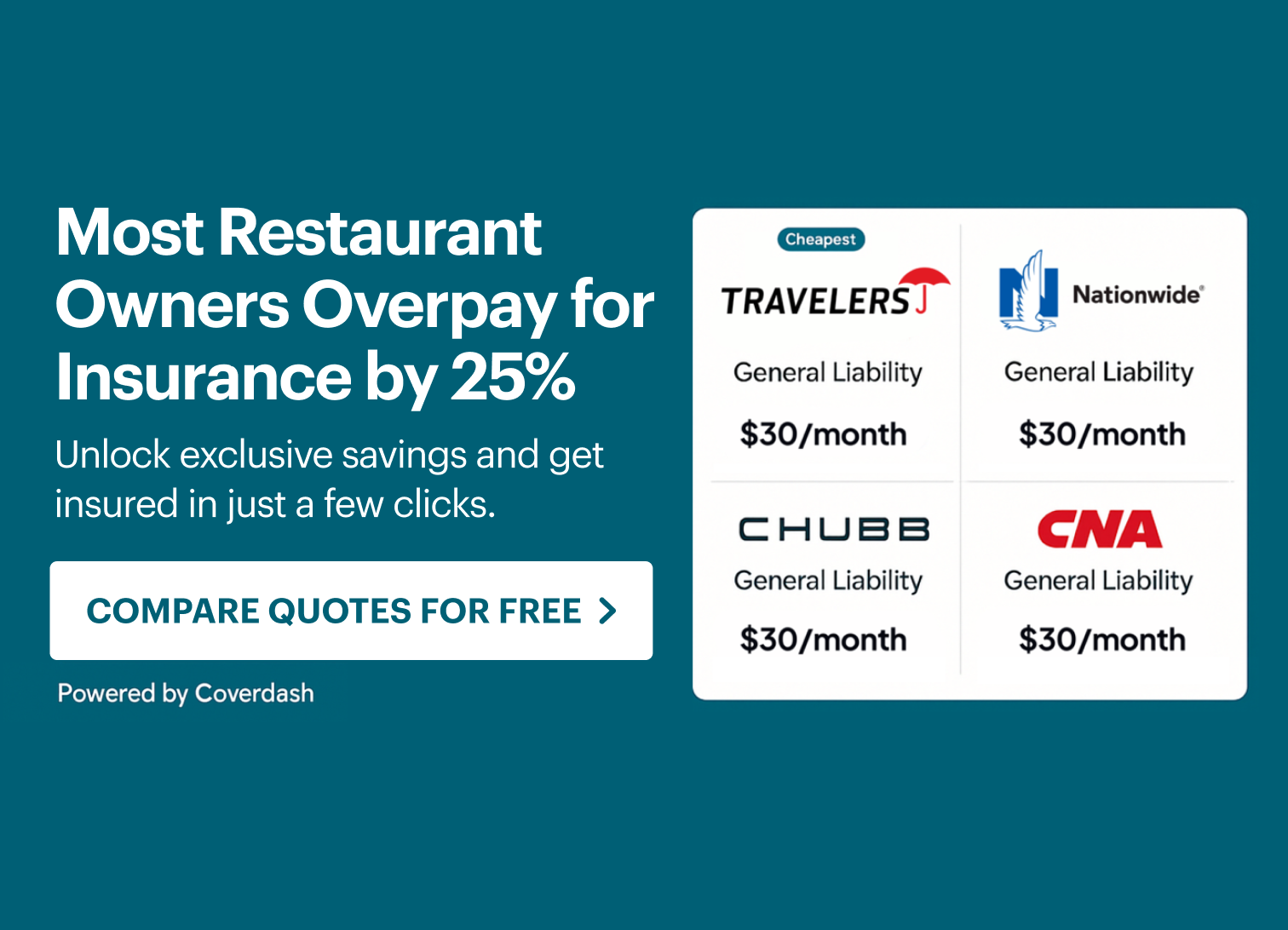While there are many different types of restaurants that come in all shapes and sizes, today’s restaurant concepts extend beyond the traditional fast food, casual, and fine dining concepts. Fine dining is loosening its bow tie, fast food is getting fancy, and food trucks are serving up for more than hot dogs and chips.
The stark lines that once divided these restaurant concepts have been replaced by grey areas that overlap each other, which can make it difficult for restaurant owners to define their own restaurant concept.
In this article, we’ll break down the definition of each restaurant concept, their average price range, and customer demographics – so you can get started on defining your own restaurant concept for your business. And once you’ve zeroed in on a concept, you can use our Restaurant Concept Development Checklist to ensure you’re making the right choice for your business.

Family Style or Casual Restaurant Concept
Family style restaurants follow a table service/full service model. Patrons are seated at a table with a dedicated server who takes and delivers their order.
They are kid-friendly establishments, so it’s common to see paper tablecloths, crayons, and unlimited dinner rolls.
Family style restaurants strive to create a casual atmosphere, where kids are welcome but adults can still enjoy a full bar.
Family style and casual restaurants often serve breakfast, lunch, and dinner. They serve all kinds of different food, including steak, cheeseburgers, Chinese, Italian, Mexican, seafood, etc.
Some traditional family style restaurants will serve food on large share platters, whereas exclusively casual restaurants will serve individual plates.
For family style restaurants that portion food individually, the dishes are typically larger than the average fast food service.
It’s common for family style and casual restaurants to belong to a chain franchise.
Price range
- Average dinner price: $15–$25
Demographics
Family style restaurants target a blue collar, middle-class demographic. A 2014 study from Morgan Stanley revealed that casual dining’s core customers are baby boomers between 50 and 68 years old.
Family style and casual restaurants are created to appeal to a larger demographic, from a finicky four-year-old with a short attention span to older folk who may like a glass of white wine with their meals.
You are most likely to see parents with children, large groups, teenagers, and seniors dining at family style restaurants.
Examples
New York
Chicago
Toronto
Fast Casual Restaurant Concept
The latest trend in restaurant concepts, fast casual has taken the industry by storm.
Fast casual is best described as “upscale fast food”, combining casual dining with take out. You may also consider fast casual restaurants to be “quick service restaurants” (QSRs).
Fast casual has all the operational facets of a fast food restaurant – food prepared to order, disposable packaging – but is differentiated by the quality of ingredients. It’s common to see organic greens, artisan bread, or grass-fed beef on fast casual menus. Fast casual restaurants are often focused on delivering healthy, sustainable fast food.
While seating is often limited, fast casual restaurants will have more seating than the average fast food joint.
Price range
- Average check: $12, approximately $7 more than the average fast food chain
Demographics
According to Morgan Stanley, millennials make up 51% of fast casual customers. Fast casual restaurants target younger professionals who are busy but are also environmentally and socially conscious.
Examples
New York
Chicago
Toronto
Fast Food Restaurant Concept
Also known as quick service restaurants (QSRs), fast food restaurants often have meals produced en masse to meet the grab-and-go demand. With limited table service and cafeteria seating, fast food restaurants prepare food to-go and usually follow a franchised business model.
While the fast food restaurant concept has been dominated by cheap burger joints in the past, fast food has recently expanded to include fast casual restaurants and fancier establishments with more expensive meals and no seating.
Burger joints, pizza parlors, sandwich shops, chicken restaurants, and burrito places make up the majority of fast food types.
Price range
- Average check: $5–$10
Demographics
While all age groups indulge in fast food, middle income earners are more likely to eat fast food than those who are of higher than average income or lower than average income.
Examples
New York
Chicago
Toronto
Fine Dining Restaurant Concept
High style, high class, high cost: fine dining is marked by hand-and-foot service, formal dress, and an air of elegance.
Fine dining might invoke thoughts of delicate linen napkins, a sommelier, and professionally trained chefs. Many fine dining restaurants have a “chef’s table” where patrons receive one-on-one time from the chef.
Fine dining restaurants have smaller menus that change weekly or even daily. Chefs use the freshest ingredients they can find, often locally sourced.
Patrons of fine dining restaurants typically enjoy an appetizer, salad, main course, and dessert – so many fine dining restaurants offer a prix fixe menu.
With top shelf liqueurs, cognacs, and aged barrels, patrons frequenting fine dining restaurants are more likely to consume high-end booze over beers. That said, you may find microbrewery beers or rare ales available at modern fine dining restaurants.
Fine dining is not exclusive to a single cuisine, although French, Italian, steak, and seafood restaurants are commonly classified as fine dining.
Fine dining restaurant chefs consider their meals an art. Dining at a fine dining restaurant is meant to be an experience itself, not just food for food’s sake.
Price range
- Average main course: $30–$50
Demographics
Those most likely to dine frequently at fine dining restaurants assume the higher end of the income spectrum, with an income of $100,000 or more.
Examples
New York
Chicago
Toronto
Cafe Concept
Best known for coffee, espresso, biscotti, and pastries, cafes provide counter service and aim to create a comfortable, leisurely atmosphere.
Cafes are conducive for a cake between lovers, two lattes to-go, and a seating area suitable for a business interview or a conversation between good friends.
While cafes often have sandwiches, small pastries, and perhaps a soup of the day, their primary purpose isn’t lunch; it’s all about the coffee and dessert.
Price range
- Average latte price: $4.50–$5
- Average sandwich price: $8–$11
- Average pastry price: $3–$5
Demographics
According to the National Coffee Association, millennials have been a steadily rising demographic for the cafe industry since 2008. Older millennials between the ages of 25-39 are most likely to drink espresso-based drinks and gourmet coffee, while baby boomers are more likely to drink their coffee at home.
Examples
New York
Chicago
Toronto
Food Truck Concept
The food truck has evolved from its status as greasy chip truck to a restaurant on wheels.
While the food truck concept was born out of the chip truck, today we’re seeing food trucks pull up in busy urban areas with menus that are more robust than the hot dog and fries selection of yore.
Food trucks bring their food to hungry patrons, often by strategically positioning themselves outside workplaces, breweries, festivals, and concerts. A new wave of street food boasts the quality of casual dining on-the-fly.
Food type is fair game here: fish tacos, lobster rolls, pulled pork on a bun, pakora, banh mi, and almost anything can be served out of a truck.
Many successful food trucks go on to establish brick and mortar restaurants once they see enough profit.
Price range
- Average meal price: $7–$15
Demographics
Millennials may be considered the “food truck generation”: 47% of millennials have eaten from a food truck, even though their parents frequently referred to food trucks as “roach coaches” or “gut trucks.”
Examples
New York
Chicago
Toronto
Pub or Bar Concept
Pubs and bars are frequented for their alcohol and boast a social atmosphere, often with the aim of bringing people together.
It’s not uncommon for pubs and bars to have sports nights and live music, and they may have pool tables, darts, pinball, and other games.
How do bars and pubs differ?
Pubs will offer table service and casual fare that’s often classified as pub food, comfort food or finger food.
Bars, on the other hand, may daylight as a pub or restaurant and turn into a legal drinking age establishment at night with limited seating and bar service, complete with a bouncer and stringent age requirements.
Irish and British pubs are common cultural establishments. They can range from dive bars, which are cheap and cheerful, or upscale pubs, which boast the same social atmosphere with higher quality fare.
Price range
- Average meal price: $10–$20
- Average alcoholic beverage price: $5–$10
Demographics
More than half of younger millennials go to a bar on a weekly basis, while 24% of generation X and 19% of baby boomers go to bars once per week.
Examples
New York
Chicago
Toronto
Sign up for our free weekly TouchBistro Newsletter





